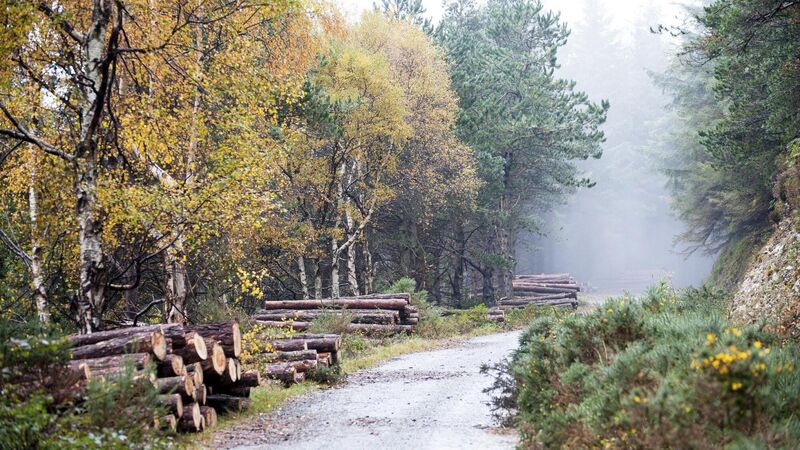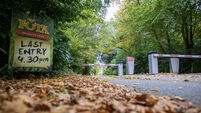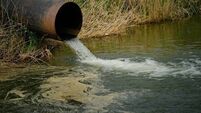Restoring degraded forests would massively boost climate and biodiversity efforts — study

The Wildlife Conservation Society, which conducted the study, said that degraded forests retain similarities to natural forests when it comes to ecosystems and plant species but crucially, they are more likely to recover rapidly, regain biodiversity levels, and store more carbon than cleared land.
Restoring all degraded forests across the world — comprising an area nearly the size of Russia — would massively boost climate and biodiversity targets, a study has found.
Degraded forests are those damaged by human activities such as logging but which still keep important natural features.
Forest degradation is different to deforestation, which means clearing the land for other activities entirely, such as construction or industrial production of palm oil or rubber. A degraded forest still exists, as a shell of its former self, akin to being on life support.
The question of restoring native forests lost to time and human interference has become a major environmental ambition in recent years, including in Ireland where campaigners have vigorously called for a strategy to restore some of the country's ancient tree cover with indigenous species as opposed to mass plantations of the likes of Sitka Spruce.
A study published in the journal Conservation Biology has modelled that bringing degraded forests back to life doubled the area of forest restoration opportunity in the so-called Five Great Forest landscapes of Mesoamerica.
The areas in Mexico, Guatemala, Belize, Nicaragua, Honduras, Costa Rica, Panama, and Colombia are some of the world's greatest biodiversity areas, as well as for carbon storage and natural food production.
The Wildlife Conservation Society, which conducted the study, said that degraded forests retain similarities to natural forests when it comes to ecosystems and plant species but crucially, they are more likely to recover rapidly, regain biodiversity levels, and store more carbon than cleared land.
In contrast, complete forest restoration will take more time and is less likely to succeed, the WCS added. As well as doubling the area of forest restoration across the world, its climate and biodiversity benefits would be boosted by 70%, the study found.

Lead author of the paper, Tim Rayden, said: “Forest restoration is sometimes presented as a trade-off between food security and nature. This is unfortunate, as there is so much scope to restore biodiversity to our farmed landscapes without compromising on food production.
"But also, as this study shows, because there are such extensive opportunities for nature restoration in degraded forests that don’t displace farming activity.”
Co-author Kendall Jones said mapping degraded forest areas "would bring rapid biodiversity gains, strengthened climate resilience, and valuable benefits for local communities".
Ancient Ireland was around 80% forest with the rest made up of the likes of bogs — today, that figure is a paltry 1% to 1.5%, according to rewilding campaigner Eoghan Daltun, whose book on restoring nature on his West Cork farm in recent years has been widely acclaimed.
Forestry policy has become a contentious issue, with many environmental campaigners at odds with the Government and national body Coillte's approach to the likes of Sitka plantations.
The Department of Agriculture submitted a formal state aid notification for the new €1.3bn forestry programme for 2023-2027 in April, and is still awaiting to secure approval from the European Commission.
The programme aims to boost payments to farmers for planting by 20-year premiums at an annual rate up to 66% higher than previous programmes.
Some 2,273 hectares of new forests were created last year, according to the Department of Agriculture's Forest Statistics Ireland 2023 report published this week. The National Forest Inventory for 2022 shows around 11.6% of the total land area of Ireland is forest cover.

Minister of State at the Dept of Agriculture, Pippa Hackett, conceded that "last year’s level of planting is far below where we ultimately need to be".
She added: "I am confident that the new €1.3bn Forestry Programme will mark a turning point for Irish forestry, and I believe that it will unlock the potential for the sector to get back to planting 8,000ha per annum and more."
In Europe, the Commission's highly contentious nature restoration proposal was finally adopted in July after frenetic negotiations and a severe watering down of the original text. The proposal aims to restore at least 20% of the EU’s damaged land and sea areas by 2030, and all ecosystems by 2050.
More than 80% of protected habitats across the EU are in a bad state, according to the European Environment Agency, with a combined area about half the size of Spain in need of restoration.
CLIMATE & SUSTAINABILITY HUB












